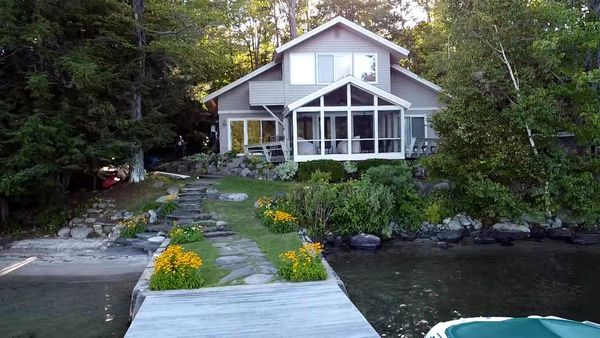Navigating through a roofing project can be a daunting task, especially when conversations with professionals turn into a jargon-filled discussion. Understanding the language used in the roofing industry is pivotal for homeowners to ensure that their roofing needs are addressed adequately.
This glossary guide seeks to demystify common roofing terms, enabling you to engage confidently in discussions and make well-informed decisions when dealing with roofing professionals.
Components of a Roof
Roofing encompasses numerous terms and concepts that are crucial in understanding how to approach roofing installations, repairs, or replacements. Let’s dive into some key terminologies:
Decking (or Sheathing)
The decking forms the foundation of the roof onto which all other materials are attached. Imagine the roof without all its tiles or shingles—the flat wood layer you would see underneath is the decking.
Decking is usually made from big panels of wood or similar materials and is laid across the roof's framework to create a solid base. This base supports all the other roofing materials, like the shingles that protect your home from weather.
When roofers need to fix or replace parts of the roof, they work on the decking. So, it's important that this decking is strong and in good shape to help your roof last longer and stay sturdy.
Underlayment
Acting as a secondary barrier against weather elements, the underlayment is installed over the decking and beneath the primary roofing material, providing an additional layer of protection. Even if your external roofing material gets damaged or water manages to sneak through, the underlayment is there to provide an extra layer of defense against leaks and moisture reaching inside your home.
Typically made from a water-resistant or waterproof material, such as asphalt-saturated felt or a synthetic option, underlayment is laid directly onto the roof decking. It plays a critical role in preventing water infiltration and damage, particularly in regions prone to harsh weather conditions like heavy rain or snow.
Shingles
Shingles are essentially the protective exterior layer that covers the roof, defending it against various environmental elements like rain, snow, hail, and sunlight. Imagine them as the roof's shield, often overlapping each other to form a barrier that directs water away from the roof, protecting the underlying structure from water damage and leaks.
Shingles come in an array of materials, including asphalt, wood, metal, or even slate, each offering different aesthetics, costs, and durability advantages. Shingles not only play a crucial role in safeguarding your home from the elements but also significantly impact the overall appearance and style of your house, contributing to its curb appeal and aesthetic value.
Flashing
Roof flashing refers to thin pieces of waterproof material, commonly made from galvanized steel, aluminum, or plastic, that guard the vulnerable areas of a roof. Positioned around chimneys, vents, skylights, and in the valleys or joints where two roof slopes meet, flashing acts as a watertight seal to prevent water infiltration into the home.
Think of flashing as the small coverings that safeguard against leaks in areas where the shingles alone can’t do the job. When water hits a surface, it naturally flows downward, and flashing is ingeniously designed to direct this water flow away from crucial intersections and out toward the shingles, maintaining a dry and damage-free state beneath the roofing structure.
Eave
In the architectural language of roofing, an "eave" is the edge of the roof that extends out beyond the walls of the building, offering both functional and aesthetic attributes to a structure. Functionally, eaves act as a protective overhang, directing rainwater away from the walls and foundation, thereby reducing potential water damage and preventing soil erosion around the building. Often, gutters are attached to the eaves, facilitating the channeling of water to designated areas.
Aesthetically, eaves contribute to the visual profile and style of a home, providing a finished look and often influencing the architectural design by modifying the appearance of the roof's edge. From a practical viewpoint, eaves also provide shade to windows, contributing to the energy efficiency of a building by minimizing the amount of direct sunlight that can enter, particularly in warmer climates.
Communicating with Roofing Professionals
Understanding roofing terms is a pivotal step toward maintaining transparent and effective communication with your contractors. Here are a few terms that you should keep in mind:
Roofing Estimates
Roofing estimates refer to a detailed proposal provided by roofing contractors outlining the expected costs of a roofing project. This typically includes the costs for materials, labor, and any additional expenses that might be incurred during the process.
The estimate is formulated after a thorough evaluation of the roof’s condition, size, design complexity, and the homeowner's material preferences and project expectations. Roofing estimates help homeowners understand the financial investment required for their roofing project and can be used to compare services and prices from different contractors.
Roof Replacement vs. Re-Roofing
Re-roofing and roof replacement are two different ways to fix up your roof. Re-roofing is like putting a new layer of shingles on top of the old underlayment and decking. It's usually faster and cheaper, and it's a good option if your roof is in pretty good shape but just needs a little refresh.
Roof replacement, on the other hand, means taking off everything on the roof and starting from scratch. It takes longer, costs more, and is usually done if there are more significant issues, like if parts of the roof are damaged or rotting.
Ponding Water
Roofing professionals use this term to refer to the accumulation of water in puddles on flat or low-sloped roof surfaces due to inadequate drainage or leveling issues. Typically, ponding water is defined as water that remains on a roof surface longer than 48 hours after the end of a rain shower.
It's a common concern in roofing because consistent ponding can lead to detrimental effects such as leaks, structural weakening, or deterioration of the roofing material.
Engage with the Roofers at Derek Cook's Roofing Specialists, INC.
We hope that this blog post helped to clear things up about your roof. If you’re looking for a trusted roofing company that can help you further demystify the roofing process, Derek Cook's Roofing Specialists, INC. is a fantastic resource, and we’re always happy to help.
Reach us anytime at (603) 365-7156 to discuss your roofing concerns with our staff.

